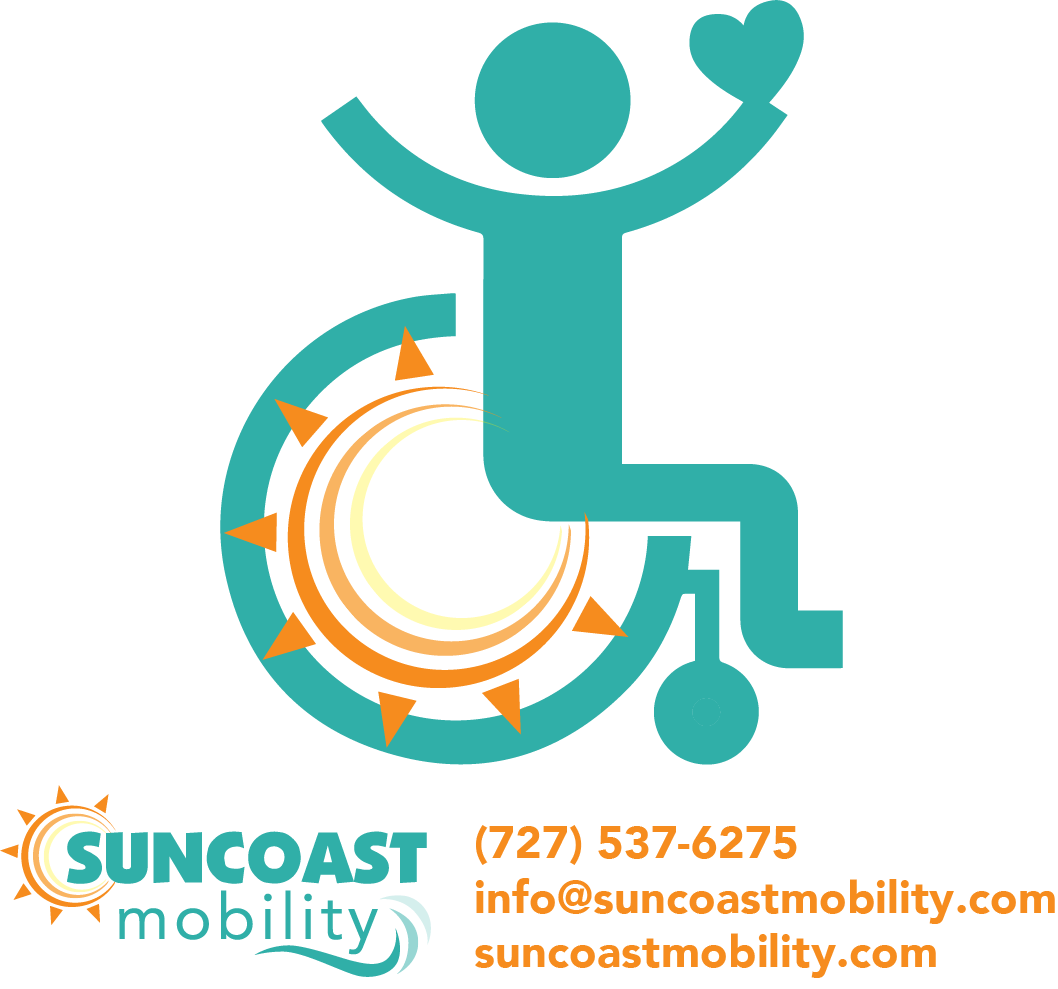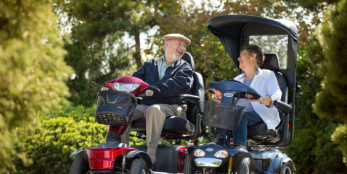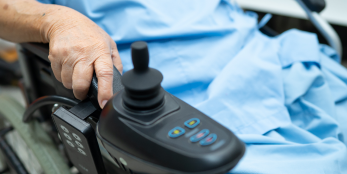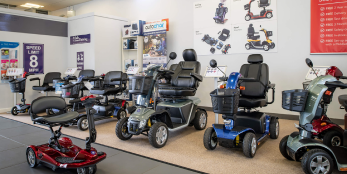Mobility Scooters 101: The Keys Terms
Shopping for a mobility scooter can be an exciting step toward gaining greater independence and freedom. But if you're looking online, chances are you've run into some technical terms that might sound unfamiliar or confusing. Don’t worry—you're not alone. Many first-time buyers (and even seasoned ones) find themselves scratching their heads at some of the jargon used in product descriptions. Knowing what these terms mean—and why they matter—can help you make an informed and confident decision when choosing the right mobility scooter for your needs.
Below, we’ll walk through the most common technical terms you’re likely to encounter and explain what each one means, why it matters, and how it might affect your riding experience.
Mobility Scooter Batteries
Batteries are the heart of your mobility scooter. Without them, you’re not going anywhere. Most mobility scooters are powered by one or two 12-volt rechargeable batteries. These batteries supply the energy needed to move the scooter and operate any electronic features, like lights or displays.
You might see something like “12Ah” or “75Ah” in a scooter’s specs. This refers to “amp-hours,” abbreviated as “Ah.” Amp-hours are a measurement of the battery’s capacity—essentially, how much energy it can store. The higher the amp-hour rating, the longer the battery can last on a single charge.
Smaller or portable scooters often have 12Ah to 20Ah batteries. These are lighter and easier to transport, but they generally offer shorter travel ranges—sometimes just 6 to 10 miles per charge.
Larger or heavy-duty scooters might have 50Ah to 75Ah batteries. These are heavier but can power the scooter for longer distances, often up to 20–30 miles or more on a single charge.
Tip: Think about how far you plan to travel in a typical day. If you only need a scooter for quick trips to the store or around your home, a smaller battery might be fine. For longer outdoor journeys, opt for a larger battery capacity.
Mobility Scooter Controls
Mobility scooters are designed to be user-friendly, especially for people with limited strength or dexterity. Unlike a car, you don’t use your feet to operate a mobility scooter. Instead, everything is controlled with your hands.
Most scooters use a hand lever known as a wig-wag. This is a type of throttle that you push or pull using your thumb and fingers. Pressing one side moves the scooter forward, while the other controls reverse. This design allows you to have precise control over your speed and direction.
Typically, the forward control is on the right, and reverse is on the left.
Some models allow for reverse configurations for left-handed users.
Tip: If you have arthritis or limited hand strength, look for scooters with ergonomic handles and lighter control resistance. Some high-end models even offer joystick-style controls similar to those on power wheelchairs.
Mobility Scooter Ground Clearance
Ground clearance refers to the space between the bottom of the scooter and the ground. It’s an important factor, especially if you plan on using your scooter outdoors or over uneven terrain.
Low ground clearance (1–2 inches) is fine for indoor use or smooth pavement.
Higher ground clearance (3 inches or more) is better for outdoor use where you might encounter curbs, gravel paths, or grassy areas.
Low-clearance scooters can get stuck easily when faced with obstacles like speed bumps or sidewalk cracks. So if you enjoy outdoor activities or plan to use the scooter in parks, go for one with a higher clearance.
Mobility Scooter Operating Range
The operating range refers to how far a mobility scooter can travel on a single battery charge. This is one of the most important specifications to consider when choosing a scooter, especially if you plan to use it for errands, outdoor travel, or long days out. The range is usually expressed in miles and can vary significantly depending on the scooter model, battery capacity, and real-world usage conditions.
While product descriptions might say a scooter has a maximum range of 10, 20, or even 30 miles, it’s important to understand that these figures are based on optimal conditions—such as smooth, flat surfaces, a lightweight rider, and a brand-new, fully charged battery. In real life, several factors can affect how far you’ll actually go on a charge:
User weight: Heavier riders put more demand on the motor and battery, which can reduce range.
Terrain: Hills, gravel, grass, or uneven surfaces require more power to navigate than flat, paved paths.
Weather: Cold temperatures can decrease battery efficiency, while extreme heat can cause overheating.
Battery age: Over time, all batteries degrade and will gradually hold less charge.
Speed: Riding at top speed consistently uses more power than cruising at a moderate pace.
Stops and starts: Frequent acceleration and braking can drain power faster than continuous movement.
Because of these variables, it’s a good idea to choose a scooter with more range than you think you'll need. For example, if your daily activities typically require 6–8 miles of travel, consider a model with at least a 12–15 mile range to account for unexpected detours or battery performance dips.
Types of scooters and their typical range:
Portable/travel scooters: Compact and lightweight, these models usually offer a range of 7 to 12 miles. They’re great for short outings or use in malls, airports, or indoor facilities.
Mid-range scooters: Suitable for both indoor and outdoor use, they typically offer 12 to 20 miles of range and balance portability with performance.
Full-size or heavy-duty scooters: These can travel 20 to 30+ miles on a single charge and are designed for users who plan to spend extended time outdoors or cover long distances.
Tip: Always recharge your scooter fully before leaving the house, and bring your charger with you if you’ll be out for long periods. Some users keep a spare battery on hand if their scooter allows for quick swaps—especially useful for travel or long day trips.
Knowing your range needs and understanding how real-life conditions impact performance will help you choose a scooter that truly supports your lifestyle without range anxiety.
Seat Size and Comfort
Scooter seats come in many shapes and sizes, and comfort is key—especially if you’ll be spending a lot of time sitting.
Compact scooters typically have smaller, low-backed seats with basic padding and minimal adjustments. These are fine for short trips but may become uncomfortable over time.
Mid-size and full-size scooters usually feature wider seats, higher backrests, and adjustable armrests. Some even have headrests, lumbar support, and reclining options.
Some scooter seats swivel, making it easier to get on and off—an especially helpful feature if you have limited leg mobility.
Tip: If comfort is important to you, look for scooters with memory foam or gel cushioning and adjustable seat height.
Tiller
The tiller is the front steering column of your scooter. It’s what you hold onto to steer, usually shaped like a bicycle handlebar or T-bar.
Most scooters have adjustable tillers, which can be tilted closer or farther from the rider to ensure comfort. However, some lower-cost or travel scooters have fixed tillers, which might not be ideal for everyone.
Tip: If possible, try a scooter in person to see how the tiller feels. If you’re buying online, check customer reviews to see whether users found the tiller comfortable to use.
Turning Radius
Turning radius is the smallest circle a mobility scooter can turn within. A small turning radius means you can make tight turns, which is crucial for maneuvering indoors, especially in narrow hallways, small rooms, or crowded areas.
Tight turning radius (under 40 inches) = great for indoor use
Wide turning radius (over 50 inches) = better for outdoor, straight-path travel
Tip: If you plan to use your scooter mostly indoors, prioritize models with a smaller turning radius to avoid constant reversing or repositioning.
Unit Weight
This refers to the overall weight of the mobility scooter itself, which includes the frame, motor, battery, and seat.
Travel mobility scooters can weigh as little as 40–60 lbs and are often designed to be disassembled into parts for transport. Usually airline and cruise ship approved.
Heavy-duty mobility scooters might weigh over 150 lbs and are usually not meant to be lifted or moved without a ramp or lift.
Tip: If you or a caregiver will need to lift the scooter into a car trunk or store it frequently, pay close attention to the weight of the heaviest part when disassembled.
Weight Capacity
Every scooter has a maximum weight capacity—this is the total amount of weight it can support, including the user and any items you carry in baskets or bags.
Exceeding this weight limit can reduce performance, shorten battery life, and even damage the motor or frame.
Standard scooters typically support up to 250–300 lbs.
Bariatric or heavy-duty models can support 400–500 lbs or more.
Tip: Always choose a scooter with at least a 10–15% higher capacity than your body weight to account for additional items or gear.
Mobility Scooter vs. Power Wheelchairs: Which One’s Right for You?
While mobility scooters are great for many users, it’s worth considering how they compare to power wheelchairs before making a purchase.
Mobility Scooter Pros:
Better for long-distance outdoor use
Easier to transport (especially travel scooters)
Typically more affordable
Stylish and often available in fun colors
Mobility Scooter Cons:
Larger turning radius
May be hard to use indoors in tight spaces
Requires upper body strength to steer
Power Wheelchair Pros:
Tight turning radius—ideal for indoor use
Easy to control with a joystick (no steering required)
More comfortable for long-term use
Suitable for those with limited mobility or hand strength
Power Wheelchair Cons:
Usually more expensive
Heavier and harder to transport
May require a van lift or ramp for travel
How long do I need to charge my scooter battery?
A battery typically takes 6–8 hours to fully charge, but it can take up to 12 hours in some cases. Always refer to your scooter's manual for specific charging instructions.
How far can I travel on a full charge?
Most scooters offer a range of 5 to 15 miles, though this can vary based on the model and battery type.
Can I take my scooter on a plane?
Yes, but it's recommended to check with the airline ahead of time to confirm that your battery type is permitted.
What is the maximum weight capacity of a scooter?
Most scooters can support weights up to 250-350 lbs, though this limit may differ depending on the model.
Final Thoughts
Purchasing a mobility scooter isn’t just about selecting a piece of equipment—it’s about reclaiming your independence and enhancing your quality of life. Whether you're buying for yourself or helping a loved one find the right fit, understanding the terminology and how each feature applies to your specific needs is essential. Take your time with the research process, and don’t rush your decision. The right mobility scooter can empower you to confidently navigate your home, neighborhood, or even travel with ease and dignity.
Always consider your long-term needs, not just what feels comfortable today. Think about where you’ll be using the scooter most often—indoors, outdoors, or a combination of both. Will you need to take it apart and lift it into a car regularly? Are your living spaces narrow or wide open? Will your condition or needs change in the coming months or years? These questions can help guide you toward the best choice.
Also, don’t underestimate the value of test drives and customer reviews. If you have the opportunity, visit a mobility showroom and try a few models. If shopping online, look for user feedback on comfort, durability, and ease of use. A scooter is an investment in your mobility—make it a smart and satisfying one.








